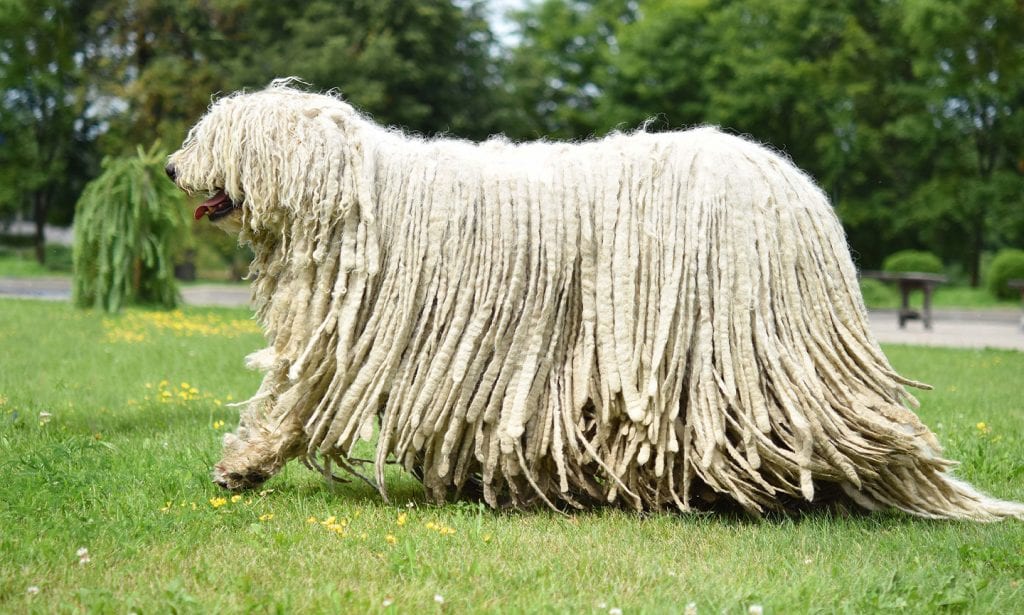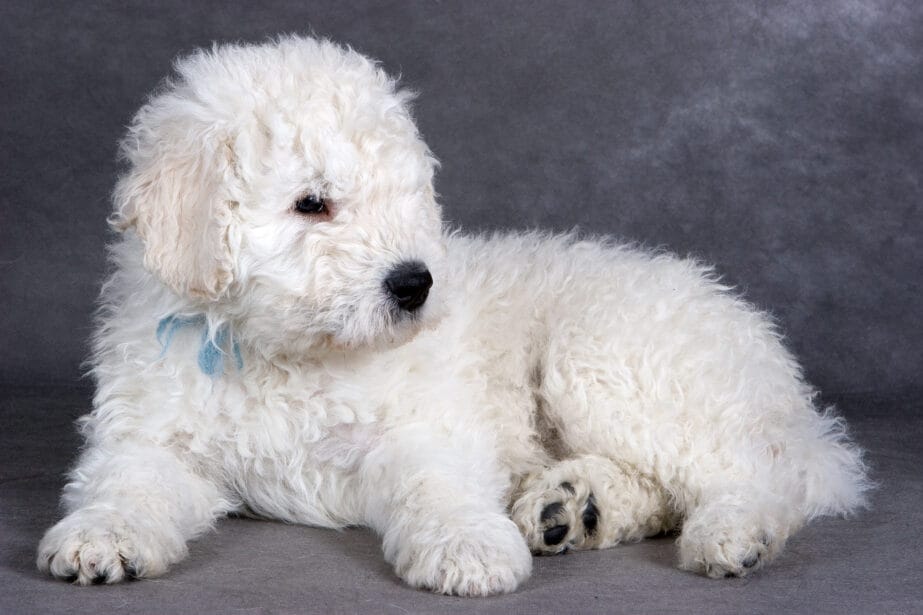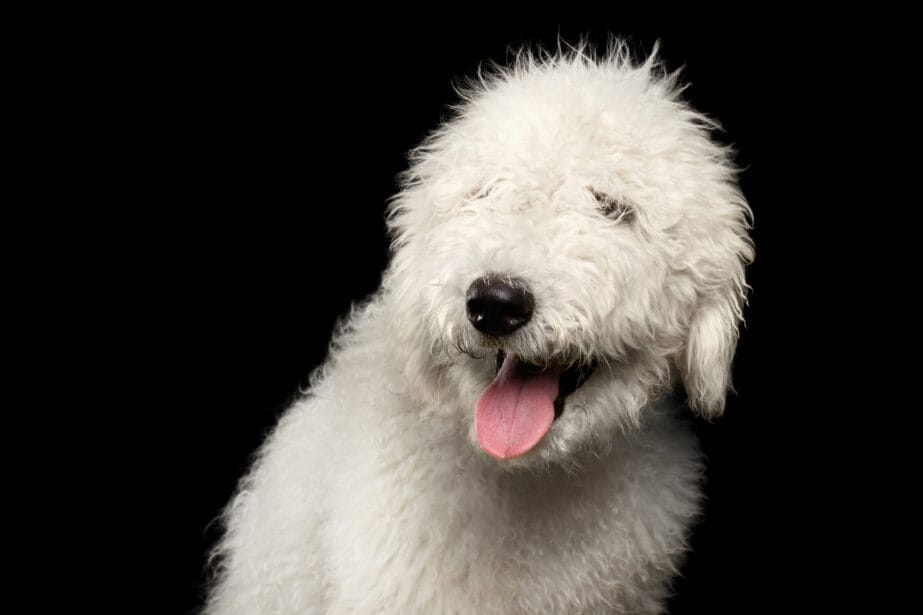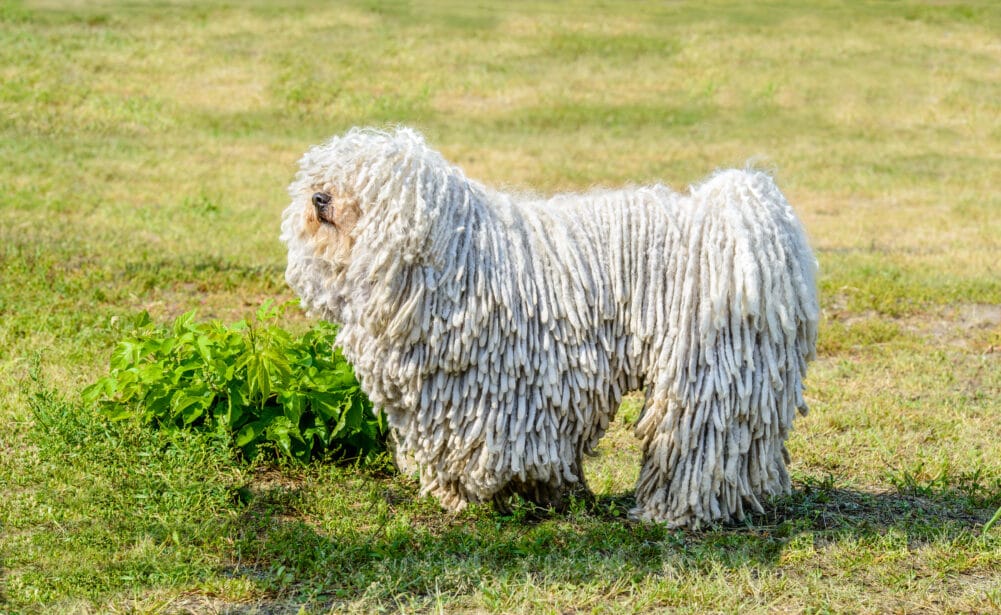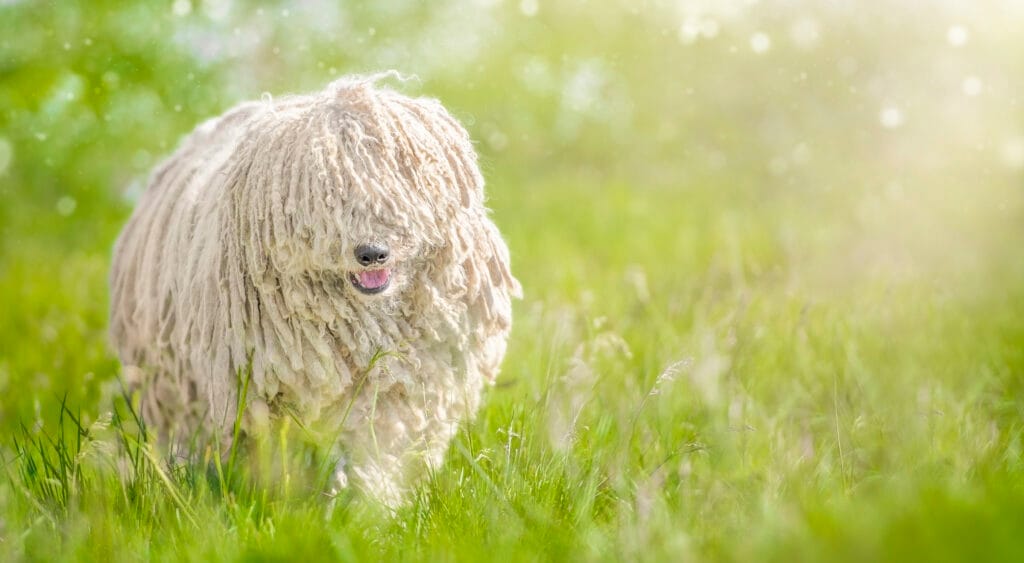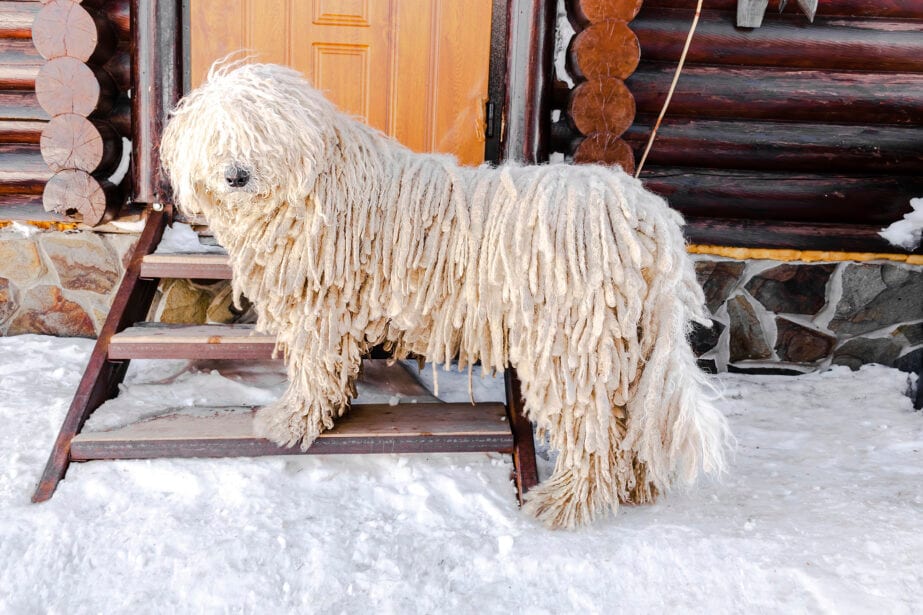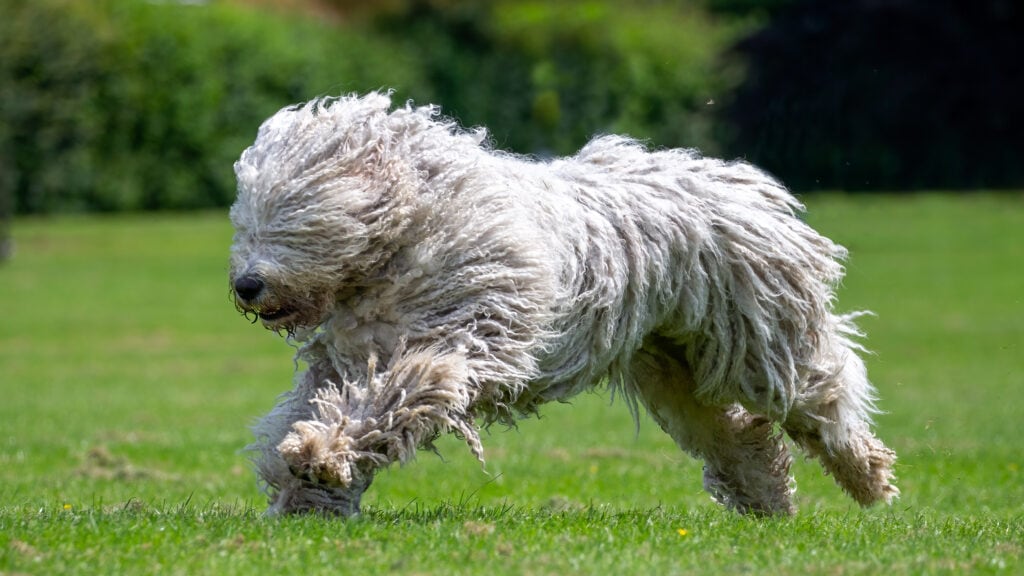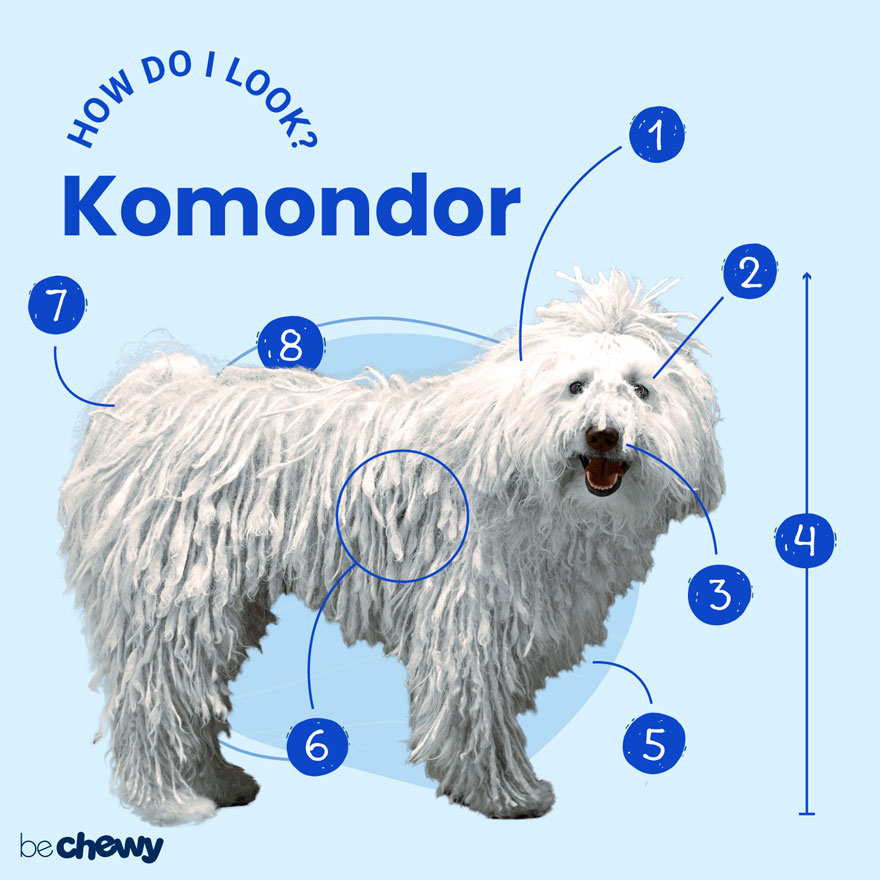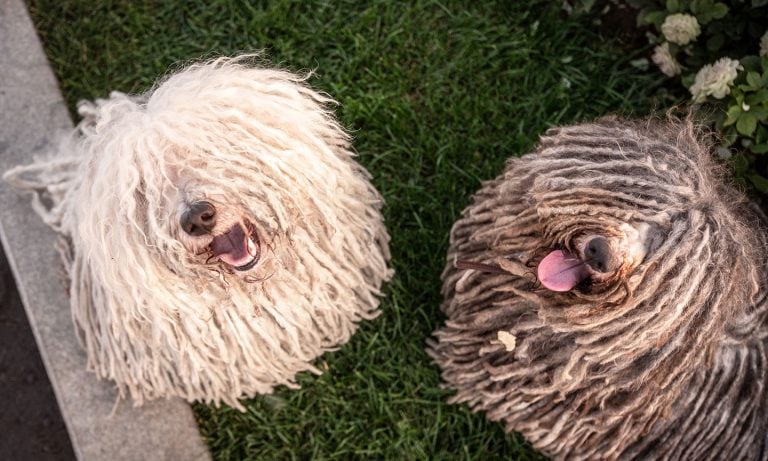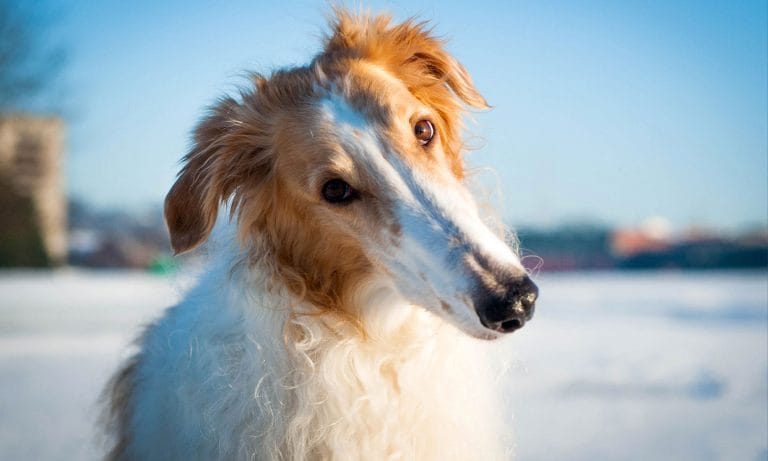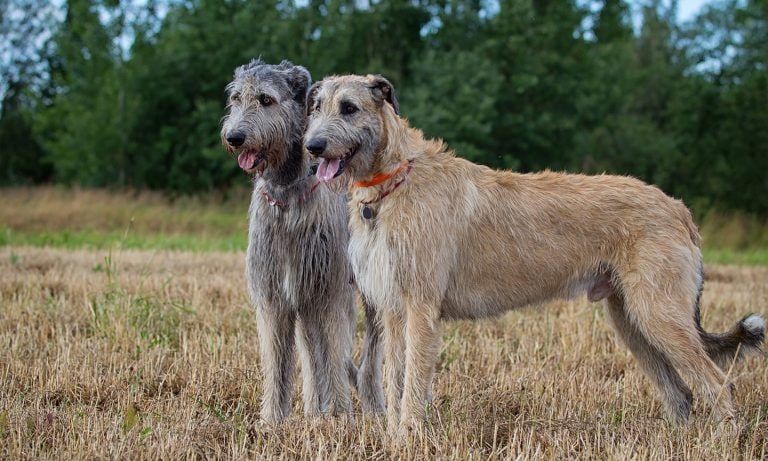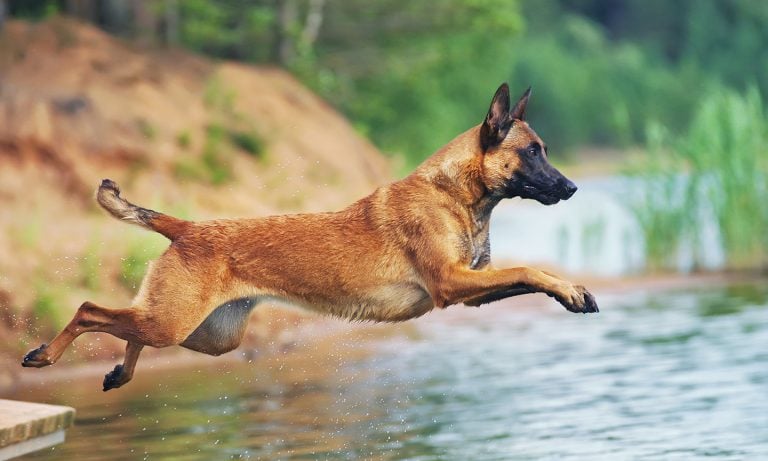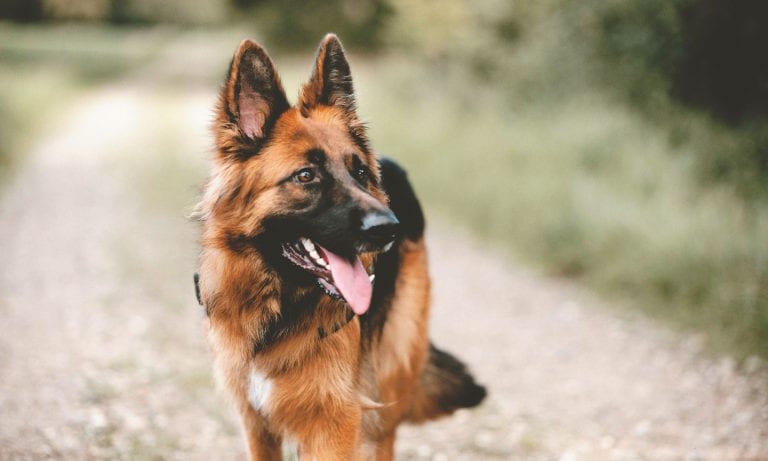You want a really distinctive dog, you say? Why, this dog may be just what you are looking for. You may think you’re getting a mop (harsh, but understandable), but a Komondor is nothing like that soggy cleaning tool. Bred to guard livestock, these pups will do anything it takes to keep you safe, and they’re not afraid to voice their opinion about it, either, as this breed can be known to bark a lot at times. From their long, unique locks to their cunning intelligence, life will never be dull with a Komondor around.
Breed Snapshot
Temperament:
SharpWatchfulChattyCoat Color:
White
Best For
The Komondor is a unique Hungarian livestock guardian dog with a distinctive corded coat. They require experienced handling, early socialization and plenty of space to roam. Potential pet parents should be prepared for their independent nature and grooming needs.
Komondor Temperament
Komondor dogs generally have a calm and quiet temperament, but they will react when they sense strange things are afoot, and that’s usually in the form of a deep, loud bark. Bred in Hungary as a flock guardian, they are devoted to their family and tend to be wary of strangers.
Komondor dogs need to be properly trained and socialized. It’s important to remember that, out in the fields, these dogs were largely left to their own devices when herding sheep. Over time, the Komondor breed developed a strong sense of independence.
When properly socialized, Komondorok can do well with kids and other pets. However, without proper training, they can be reactive toward dogs they don’t know, so trips to the dog park may not be a good idea. (Learn more about training and socialization below in the Training section.)
Like most working dogs, Komondorok need something constructive to do. Without daily exercise or mental stimulation to keep them occupied, you may not be happy with the outcome as these large dogs can be destructive when bored.
How to Care for a Komondor
Komondorok require the most maintenance during their first two years. After that, their cords are formed and need relatively little maintenance aside from baths and regular haircuts. And that means more time to spend on training these strong-willed dogs. Moderate exercise and a healthy diet will ensure they reach their full life expectancy.
Komondor Health
Komondorok have a lifespan of 10 to 12 years, and while they are generally healthy, there are some health issues common to the breed. It’s important that prospective pet parents have all the information they need to understand any potential health problems that could arise.
- Hip Dysplasia: This degenerative disease is common in many breeds of dogs, and it arises when the ball and socket of the hip do not fit together properly. Symptoms of hip dysplasia include decreased mobility, a reluctance to run, jump or climb stairs, and stiffness or limping. The treatment for hip dysplasia can range from physical therapy to joint supplements to surgery. Consult your vet for more information.
- Entropion: This eye condition occurs when the eyelids of the Komondor roll inward. When this happens, the eyelashes rub on the cornea, leading to irritation. Common symptoms include excessive tearing, squinting and constant rubbing. For mild cases, a topical antibiotic may be prescribed to keep infections at bay, while moderate cases may require surgery to correct the issue. Regular ophthalmology consultations are also recommended for this breed.
- Gastric Bloat/Dilatation-Volvulus: Gastric bloat and gastric dilatation-volvulus are more common in deep-chested dogs like Komondorok. Bloat may occur when your dog eats too quickly or “bolts” their food, causing a sudden influx of air into their stomach. This, in turn, can cause their stomach to distend and twist, which is often deadly if not treated immediately. To prevent gastric bloat and torsion, pet parents may be encouraged to try slow feeders. Preventive surgery is also an option, to suture the stomach to the abdominal wall, lessening the chance of the stomach twisting.
Komondor History
While there are many theories regarding the exact origin of Komondor, the earliest records of the breed date back to the 16th century when it’s believed that these dogs first arrived in Hungary, brought there by the Magyars.
Bred as a working dog to guard livestock, these dogs have quite a few interesting characteristics to help them do their jobs. Their distinctive white cords allowed them to blend in with their flock of sheep, and the thick cords essentially served as armor to protect them from the sharp bites of attacking wolves.
Komondorok were first brought over to America in 1933, and the American Kennel Club first recognized them in 1937. Used throughout World War II to guard military installations, the breed was almost extinct by the time the war was over. Today the Komondor is still considered a very rare breed. While the highest populations of Komondorok live in their native Hungary and the United States, there are still less than 10,000 of them.
Today, life for these livestock guides has changed a bit. In the absence of a flock, Komondorok tend to use their exceptional qualities and talents to protect the people they love the most.
Looking to add a Komondor to your home? The average price of a Komondor puppy is about $800 to $1,200. Of course, when you take bloodlines and lineage into consideration, the cost could be much higher. Check out the AKC’s website to find a reputable breeder. You can also reach out to Komondor rescue organizations to adopt a Komondor or keep an eye out for the breed at your local animal shelter. Search Chewy’s database of adoptable dogs near you.
FAQs
Do Komondorok shed?
Despite all that hair, Komondorok don’t shed very much at all! In their first two years of life, their coats may require more attention to get the cords started, but once the cords have plated, it should be relatively smooth sailing from there.
Why do Komondorok have dreads?
The unmistakable dreadlocks on these pups are simply a result of the hair from their overcoats and undercoats twisting together. Once the cords have been formed, pet parents need not brush or comb their Komondor’s hair. Washing it periodically and thoroughly drying it is all that’s needed.
What are the most common Komondorok mixes?
The most common Komondor mixes are:
- Komondor-Great Pyrenees mix (Komondor-Pyrenees)
- Komondor-Poodle mix (Komondor-Poodle)
- Komondor-Newfoundland mix (Newkom)
- Komondor-Golden Retriever mix (Komondor-Golden Retriever)
- Komondor-Labrador mix (Komondor-Lab)
Note: These are not purebred dogs but mixed breeds.
What were Komondorok bred for?
Komondorok were bred to be livestock guardians and working dogs. Their heavy white coats allowed them to blend in with their flock and protected them from predatory attacks by wolves.
Are Komondorok family dogs?
Komondorok are intensely loyal, and they love their humans. They can make good family dogs, but they must be well-socialized and receive consistent training.
Do Komondorok bark a lot?
Staying true to their upbringing as guard dogs, Komondorok bark a lot when they sense trouble. They have a distinctive bark that is loud and deep, and they have no qualms about exercising their freedom of expression.
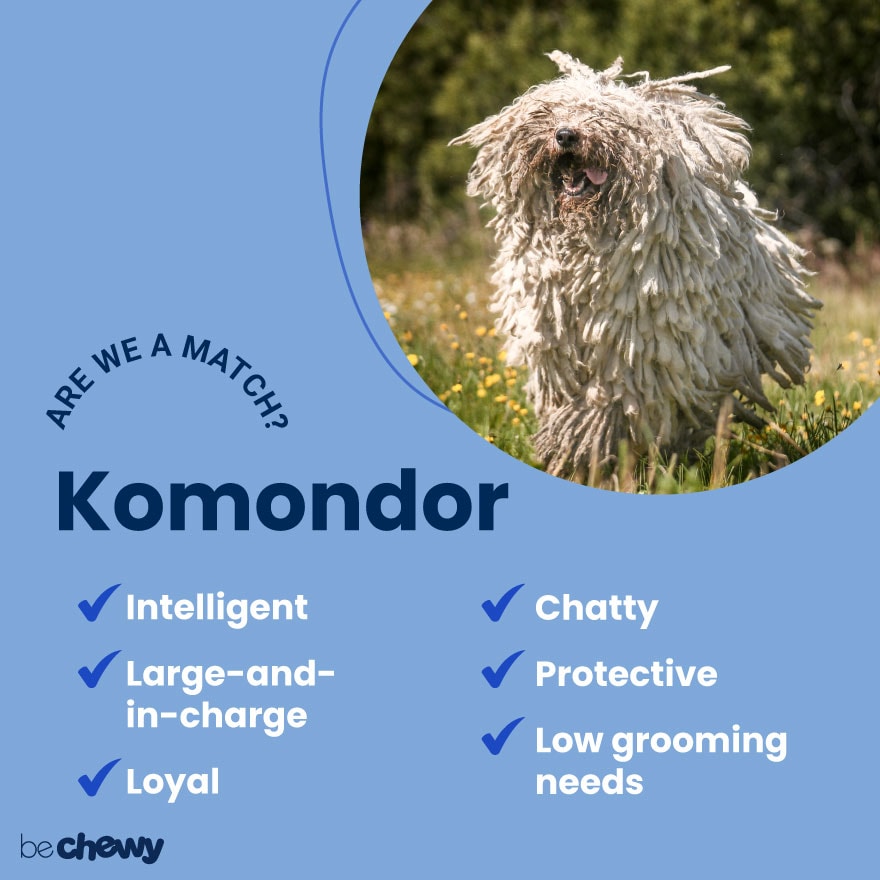
Top Takeaways
Komondorok are highly intelligent dogs with an independent streak. They love their families and will do anything to keep them safe. Under their mop-like exterior, there is a large, intelligent and powerful dog who needs a confident and consistent leader to guide them. These dogs don’t require tons of exercise; daily walks are plenty, and they’re just as happy running by your side in the park or sitting by your side on the couch.
Expert input provided by Jody Haas-Wolfson, CPDT-KA, and owner of Root Dog Training, and Steffi Trott, owner of SpiritDog Training.
Breed characteristic ratings provided by veterinarian Dr. Sarah J. Wooten, DVM, CVJ, a veterinarian at Sheep Draw Veterinary Hospital in Greeley, Colorado; dog trainer and behavior consultant Irith Bloom, CPDT-KSA, CBCC-KA, CDBC, owner of The Sophisticated Dog, LLC, in Los Angeles; and certified animal behavior consultant Amy Shojai, CABC, in Sherman, Texas.
The health content was medically reviewed by Chewy vets.

Search for Adoptable Komondors Near You
Female Names
- Kharma
- Anouk
- Ruby
- Bella
- Artemis
- Sassy
- Fraya
- Chani
- Dottie
- Talulah
Male Names
- Clyde
- Benci
- Cooper
- Brewer
- Butter
- Vajk
- Zeus
- Gary
- Wally
- Fredo
Share:
